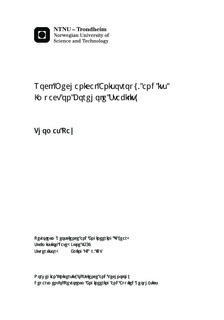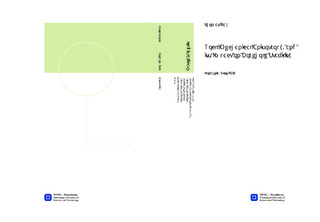| dc.contributor.advisor | Fjær, Erling | nb_NO |
| dc.contributor.author | Paz, Thomas | nb_NO |
| dc.date.accessioned | 2014-12-19T12:18:27Z | |
| dc.date.available | 2014-12-19T12:18:27Z | |
| dc.date.created | 2014-09-04 | nb_NO |
| dc.date.issued | 2014 | nb_NO |
| dc.identifier | 743694 | nb_NO |
| dc.identifier | ntnudaim:11915 | nb_NO |
| dc.identifier.uri | http://hdl.handle.net/11250/240423 | |
| dc.description.abstract | In drilling operations, small margins between wellbore collapse and hydraulicfracturing can become aggravated in anisotropic formations. A stuck piperesulting from borehole failure can give serious economic consequences, as itmay require sidetracking or even abandoning the well. The prediction of theminimum mudweight to prevent hole collapse is a complex process affectedby rock properties, stress configuration and wellbore orientation. An understandingof the underlying physics, in particular on the failure models foranisotropic strength is required to combat wellbore collapse. In addition,understanding the behavior of elastic stresses for wellbore geometry is ofhigh importance.Existing models show that the predicted mudweight to prevent failure increasesif anisotropic formation strength is assumed. The motivation andgoal for this study is to achieve a greater understanding of how rock anisotropymay influence the wellbore stability.Three strength and two stiffness models predicting behavior in transverselyisotropic material have been investigated. Data from 171 compression testson a selection of mudrocks was used to calibrate the parameters in eachmodel. Goodness of fit analyses were conducted to determine the preferredmodel. Further, this model was used in predictions of shear failure in boreholestability analyses. The impact of isotropic and anisotropic stress configurationson borehole stability were studied. In addition, mudweight limitsfor intrinsic and structural strength anisotropy, and the difference betweenusing strength anisotropic and strength isotropic criteria was investigated.The mudrock selection consisted of four shales and one mudstone displayingdirectional anisotropy. The models in Fjær et al. (2014) were found tobe preferred for the rock selection. They predicted the trends in stiffnessand strength for both intrinsic and weakplane failure. The borehole stabilityanalyses predicted higher minimum mudweight when accounting foranisotropic stresses. This effect became more pronounced when accountingfor intrinsic and structural strength anisotropy.Conclusions drawn from the study include Fjær & Nes model being the preferredmodel for anisotropic strength and stiffness prediction for this rockselection. The model was able to predict the trends in both intrinsic andstructural anisotropy, suggesting that it may be used for a variety of transverselyisotropic rocks. Strength anisotropy in stability analyses displayedup to 32 % higher minimum mudweight limit compared to prediction basedon strength isotropy. This emphasizes the importance of accounting for rock | nb_NO |
| dc.language | eng | nb_NO |
| dc.publisher | Institutt for petroleumsteknologi og anvendt geofysikk | nb_NO |
| dc.title | Rock Mechanical Anisotropy, and its Impact on Borehole Stability | nb_NO |
| dc.type | Master thesis | nb_NO |
| dc.source.pagenumber | 108 | nb_NO |
| dc.contributor.department | Norges teknisk-naturvitenskapelige universitet, Fakultet for ingeniørvitenskap og teknologi, Institutt for petroleumsteknologi og anvendt geofysikk | nb_NO |

